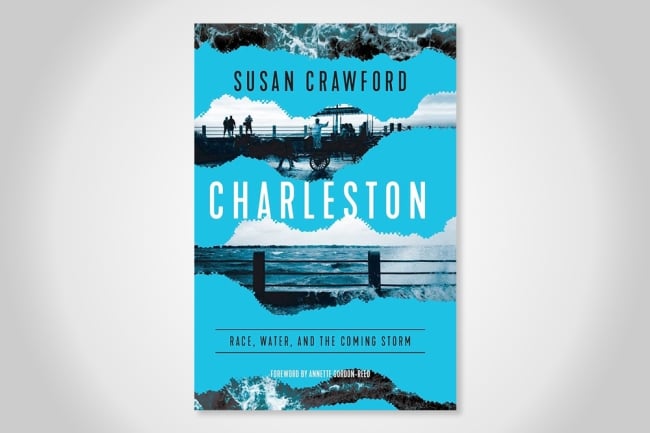You have /5 articles left.
Sign up for a free account or log in.

Pegasus Books
Charleston: Race, Water, and the Coming Storm by Susan Crawford
Published April, 2023.
Wikipedia lists eight institutions of higher education in Charleston, S.C.
- The American College of the Building Arts
- The Citadel
- College of Charleston
- Charleston School of Law
- Medical University of South Carolina
- Charleston Southern University
- Roper Hospital School of Practical Nursing
- Trident Technical College
After reading Charleston: Race, Water, and the Coming Storm, I think that these eight schools might be the most interesting places to work in all of higher education.
The thing about academia is that we operate on long time scales. We tend to think in decades rather than years. Nonprofit universities are designed for resilience. This is not to say that colleges don’t face existential risks. Last year, more than a dozen colleges closed their doors. It is just that it is a very big deal when a college is forced to shut down or merge.
It is the long-term perspective of institutions of higher education that fascinates me so much about the schools located in Charleston, S.C. As Charleston: Race, Water, and the Coming Storm covers in detail, the city is among the most vulnerable places in the U.S. to the effects of climate change.
In 2023, Charleston recorded 75 occurrences of flooding. Due to rising sea levels, heat and rainfall, Charleston is projected to see 180 days of flooding by 2045.
Every college and university in the U.S. will face some form of climate change risk in the 21st century. The climate-related risks the schools in Charleston, manage are only more extreme and immediate than at most institutions.
I am confident that the colleges and universities in Charleston will adapt and survive. The rest of us in higher education will have much to learn from following the climate mitigation strategies of these eight institutions.
As Charleston: Race, Water, and the Coming Storm illuminates, the highest costs of climate change will be shouldered by those with the least resources. Wealthy residents of coastal areas such as Charleston can adapt their homes (and campuses) to (mostly) deal with the rising water and the dangers of hurricanes.
The people most at risk of climate change, those without the incomes or wealth to move to higher ground or to afford insurance (assuming the insurance market does not collapse), will have few options when the water comes.
Who are the most essential workers of a physical college campus? We learned the answer to this question during the pandemic. Essential higher ed workers are those people who, if they did not come to the campus each day, the campus could not run. These are the people who make the food, clean and care for the buildings, and keep the campus infrastructure running.
For the schools in Charleston and everywhere else where campuses are at extreme climate risk, how will these essential workers reliably make it to campus? How do you commute to campus when the roads are flooded? What happens when the combination of rising housing costs close to at-risk campuses pushes the commute times for university workers even longer while, at the same time, commutes become more treacherous?
Will universities at the most significant risk of flooding move some of their campus operations to higher ground? Or will universities be able to elevate buildings, roads, and quadrangles—while investing the money necessary to channel the water and reinforce structures against high winds?
Charleston: Race, Water, and the Coming Storm does a beautiful job of narrowing the focus of climate change to a single city. By exploring the city in depth, the book weaves together themes of race, class, policy and history into a compelling narrative of the future impacts of climate change.
An extension of this approach, building on Bryan Alexander’s Universities on Fire, would narrow the lens even more and look at how one university (or all the colleges in a city) is planning to manage the risks of climate change.
Eventually, and for some schools sooner than later, we will all need to do whatever the College of Charleston and the other schools in that area are doing now to prepare for the water, heat, and storms. Higher education in Charleston, S.C., is ground zero for the impacts of climate change. All of us should pay attention to what our colleagues at these schools are doing to prepare.
What are you reading?




